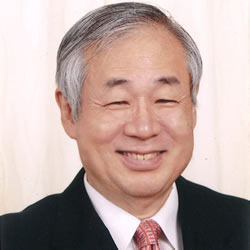Greeting
Greeting from Honorary Chairman
 |
With the end of the Cold War, cross-border flow of goods, people and money has increased drastically both in quality and quantity. The one taking place on a world-wide scale is called globalization, while the other on a regional level is called regionalization. While regionalization has advanced in many parts of the world, East Asia had long been left behind as a region with barriers separating countries so high and with prospect of regionalization so dim. However, in the wake of the Asian Financial Crisis in 1997, East Asia was also awakened to see a swift advance of regionalization as a defensive step towards the crisis. It was in this context that the Network of East Asian Think-tanks (NEAT) and the East Asia Forum (EAF) were established in 2003 at the request of the ASEAN+3 (Japan, China and ROK) Summit. On that very occasion, The Council on East Asian Community (CEAC) was established in Japan as a body to represent think tanks, businesspersons, intellectuals as well as government officials. Honorary Chairman of CEAC |
